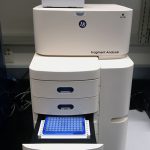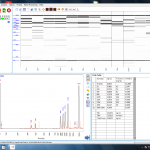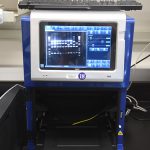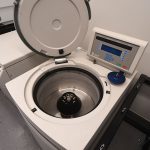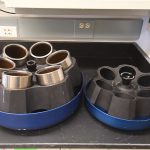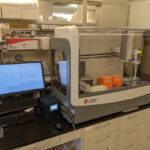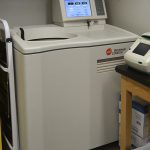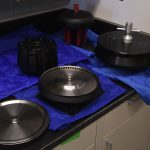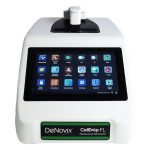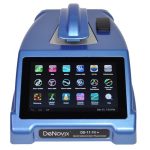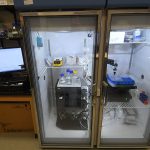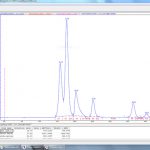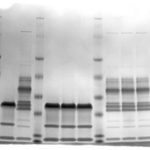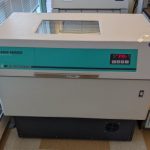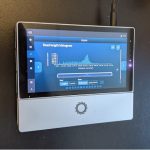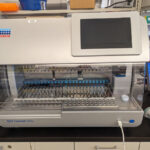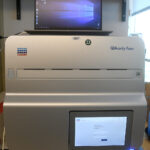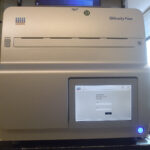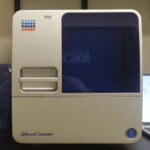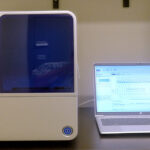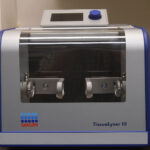The GEVVC provides training and instruction materials for the safe and responsible use of relevant capital equipment including shaking incubators, centrifuges, ultracentrifuges, gel documentation systems, capillary electrophoresis systems, droplet digital PCR systems, and protein purification systems. Due to the biosafety considerations involved with viral vectors, access is granted on an as-needed basis once appropriate training has been given.
Agilent (AATI) 5200 Fragment Analyzer
Agilent (AATI) 5200 Fragment Analyzer is an automated capillary electrophoresis system that is capable of high sensitivity and high-resolution characterization and quantification of nucleic acids. It is used in our standard quality assurance (QA) assays during plasmid and virus production as well as conventional and CRISPR-related genotyping assays.
- AATI Fragment analyzer
- AATI Fragment analyzer screen capture
Azure C200 gel documentation system
Azure C200 gel documentation system is capable of the UV and visible fluorescence imaging after gel electrophoresis. This device is located within the BSL2 virus production lab.
Azure C600 gel documentation system
Azure C600 gel documentation system is capable of imaging ultraviolet, visible, and infrared fluorescence of samples after electrophoresis or after transfer to membrane substrate. It is also capable of recording chemiluminescent signal for high-sensitivity analysis.
- Azure C600 gel documentation system
- Azure C600 screen capture
Beckman Coulter Avanti J-26 XPI centrifuge
Beckman Coulter Avanti J-26 XPI centrifuge is used for harvesting bacteria and/or mammalian cells grown in culture, as well as during the isolation nucleic acids and proteins from cell lysates. A variety of rotors are available to accommodate different tube and bottle volumes.
- Beckman Coulter Avanti J-26 XPI centrifuge
- Beckman Coulter Avanti J-26 XPI centrifuge rotors
Beckman Coulter Biomek 4000
The transition from custom-crafted “one-off” experiments to standardized “high-throughput” assays present many bottlenecks which typically involve repetitive pipetting and “plate setup”.
The Beckman Coulter Biomek 4000 is an automated liquid handler for ensuring precision and accuracy in standardized procedures for transferring liquids in single channel or multichannel (SPAN-8) based operations. GEVVC has successfully used this device to automate the isolation of genomic DNA from tissues and the purification of PCR products using Solid Phase Reversible Immobilization (SPRI) Methodology, the parallel purification of 6xHIS tagged proteins using PHYTIPs from Biotage, and for the semi-automated setup of 96-well plate PCR reactions to be loaded on the QIAcuity. Although this device is powerful, programming it for a new workflow is not trivial. Consultation, training, and scheduling is required to have walk-up access to this device.
- Beckman Coulter Biomek 4000
Beckman Coulter Optima L-100 XP ultracentrifuge
Beckman Coulter Optima L-100 XP ultracentrifuge is used for the isolation of organelles or viral particles from cell lysates. A variety of rotor sizes are available, including swinging bucket and fixed angle options.
- Beckman Coulter Optima L-100 XP ultracentrifuge
- Beckman Coulter Optima L-100 XP ultracentrifuge rotors
Denovix CellDrop
Denovix CellDrop is a microvolume DirectPipette™ cell counter capable of quantifying concentrations of cells in suspension, and assaying for transfection efficiency (% GFP-positive) or viability (trypan blue or acridine orange/propidium iodide).
- Denovix CellDrop
Denovix DS-11 FX
Denovix DS-11 FX is a microvolume spectrophotometer/fluorometer used for quantifying nucleic acids (dsDNA, ssDNA, RNA) or proteins in a liquid sample.
- Denovix DS-11 FX
GE ÄKTA FPLC
GE ÄKTA FPLC is used for the automated affinity chromatography of adeno-associated virus and recombinant proteins.
- GE ÄKTA FPLC
- GE ÄKTA FPLC screen capture
- FPLC Protein Gel
New Brunswick Scientific I2500 shaking incubators
New Brunswick Scientific I2500 shaking incubators are used for growing bacteria during plasmid and protein production at 32C and 37C. Brackets, racks, and clamps for 14mL tubes and various sizes of Erlenmeyer flasks are available (50mL – 2L).
- New Brunswick Scientific I2500 Shaking Incubator
Oxford Nanopore MinION Mk1C
Oxford Nanopore MinION Mk1C is a “third generation sequencing device” for long-read/single molecule analysis of nucleic acids. It is capable of sequencing DNA from various sources (plasmids, viral vectors, cells). It is also capable of sequencing cDNA and RNA samples.
- Oxford Nanopore MinION Mk1C
QIAGEN EZ2 Connect MDx
The QIAGEN EZ2 Connect MDx is a robotic liquid handler that is specialized for the isolation of nucleic acids (RNA/DNA/both) from fresh or formalin-fixed biological samples. Built-in UV decontamination and constrained pipette movements are designed to minimize cross-contamination between samples and between runs. It can process up to 24 samples at a time using pre-defined programs. Typical protocols for DNA and RNA are completed in 20 and 60 minutes, respectively. Training and scheduling is required to have walk-up access to this device.
- QIAGEN EZ2 Connect MDx
QIAGEN QIAcuity digital PCR
QIAGEN QIAcuity digital PCR is used for the detection and absolute quantification of specific nucleic acids from DNA and RNA samples. It can multiplex up to five probe-based assays per reaction and can queue up to four 96-well plates at a time. It is used to establish the titer (viral genomes per mL) of our virus preparations, to determination of copy number for our transgenic animal and cell-line models, and to measure gene expression
QIAGEN QIAxcel Connect
Standardized fluorescence-based analysis is a good practice to provide quality assurance for nucleic acids (RNA and/or DNA) isolated from biological tissues prior to moving forward with downstream workflows (i.e. gene expression analysis by quantitative PCR, next-generation sequencing, etc.)
The QIAGEN QIAxcel is an automated fragment analyzer that can analyze DNA or RNA and provides assessments on fragment sizes and concentration. It can process an entire 96 well plate without intervention (1 row of 12 samples at a time). Typical protocols for DNA and RNA are completed in 20 minutes (per row). Training and scheduling are required to have walk-up access to this device.
- QIAGEN QIAxcel Connect
- QIAGEN QIAxcel Connect
QIAGEN TissueLyser III
Efficient isolation of nucleic acids or proteins from biological tissues often requires homogenization.
The QIAGEN TissueLyser III using high-speed shaking oscillation to disrupt biological tissues in tubes or sample jars containing stainless steel, zirconium, ceramic, or glass beads. It can process up to 192 samples at a time using pre-defined or custom programs. Typical protocols are completed in less than 10 minutes. Training is required to have walk-up access to this device.
- TissueLyser III
